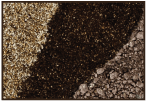Symbiotic association of mycorrhizal fungi with plant roots

First, select the right growth enhancer and quality for your plant.

Next, apply the product close to the roots during the transplantation.

Mycorrhizal fungi initially germinate in the soil and make their way to the nearest roots.

The roots are then colonized by the fungi and mycorrhizae is established.

Finally, mycorrhizae develop the root system through a more efficient uptake of water and nutrients by the plant.
Since it opened its plant in 2000, Premier Tech has developed over the years a unique level of expertise in industrial production of top-quality mycorrhizal inoculants.
Premier Tech became the very first manufacturer to produce top-quality mycorrhizal inoculants.
The result is contaminant-free mycorrhizal spore suspensions that are used to produce the very high quality products that make up MYKE.
Subscribe to our newsletter to receive our gardening tips, news and more directly in your inbox! Fill in the form below. Please note that fields with an * are required.